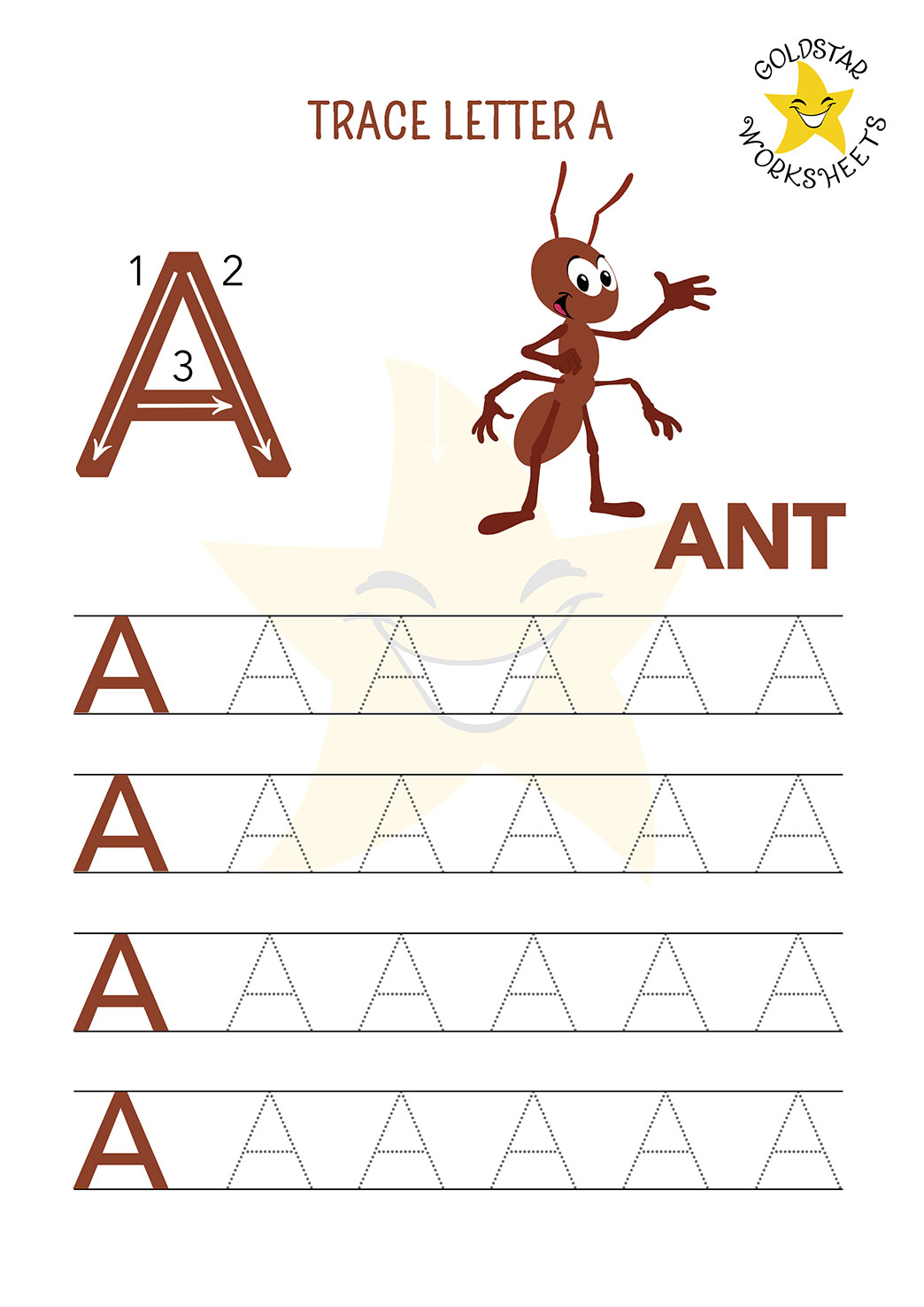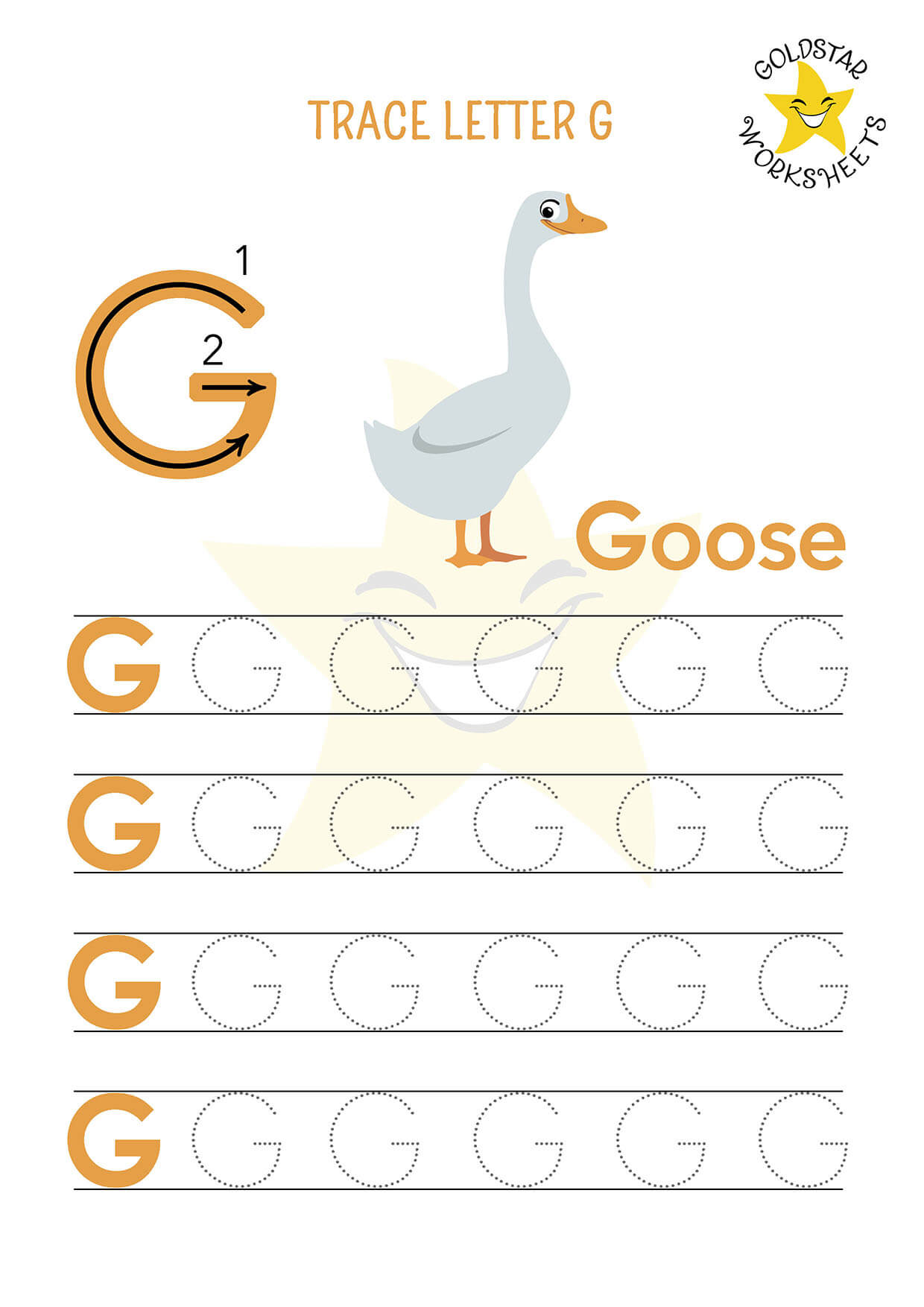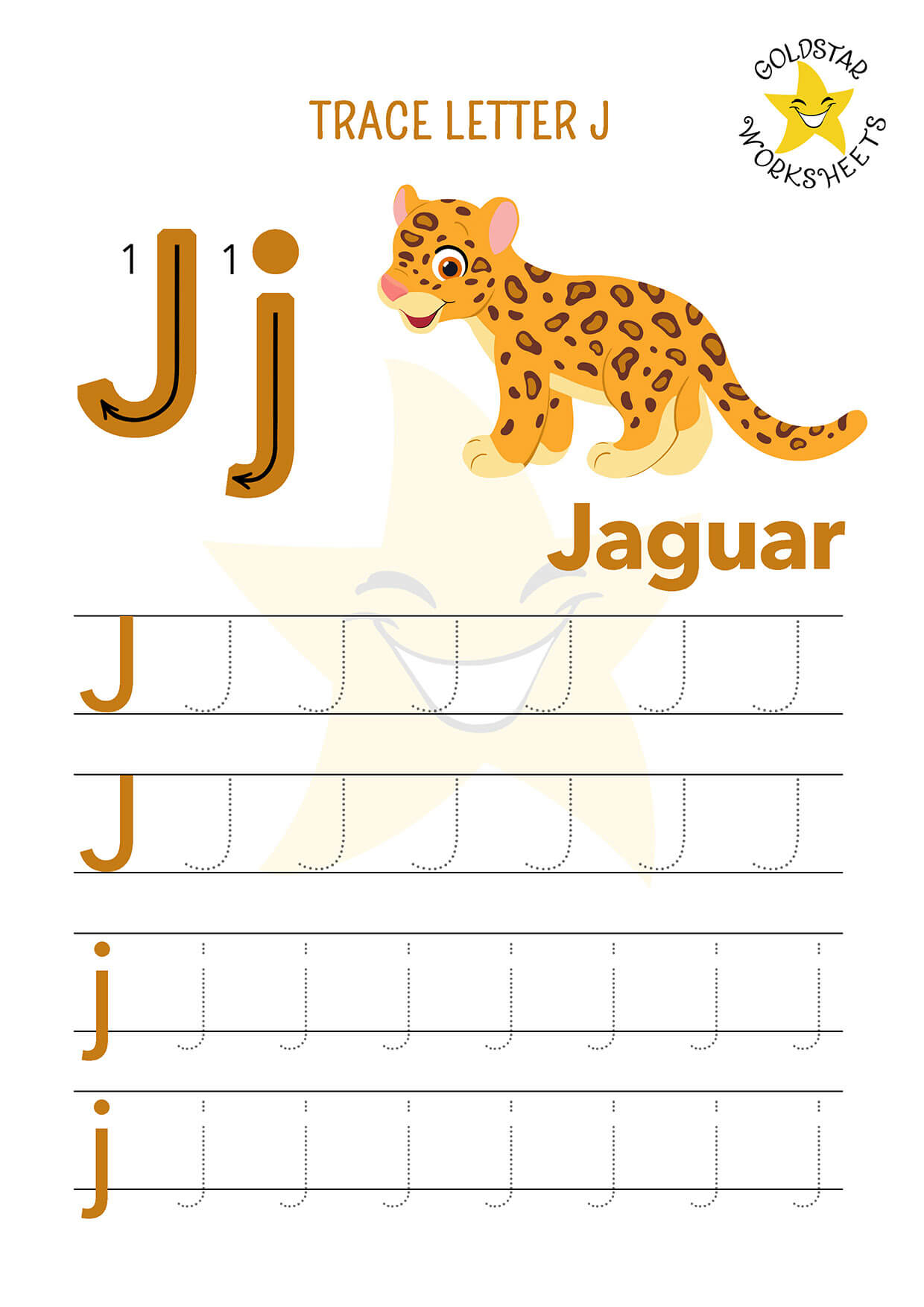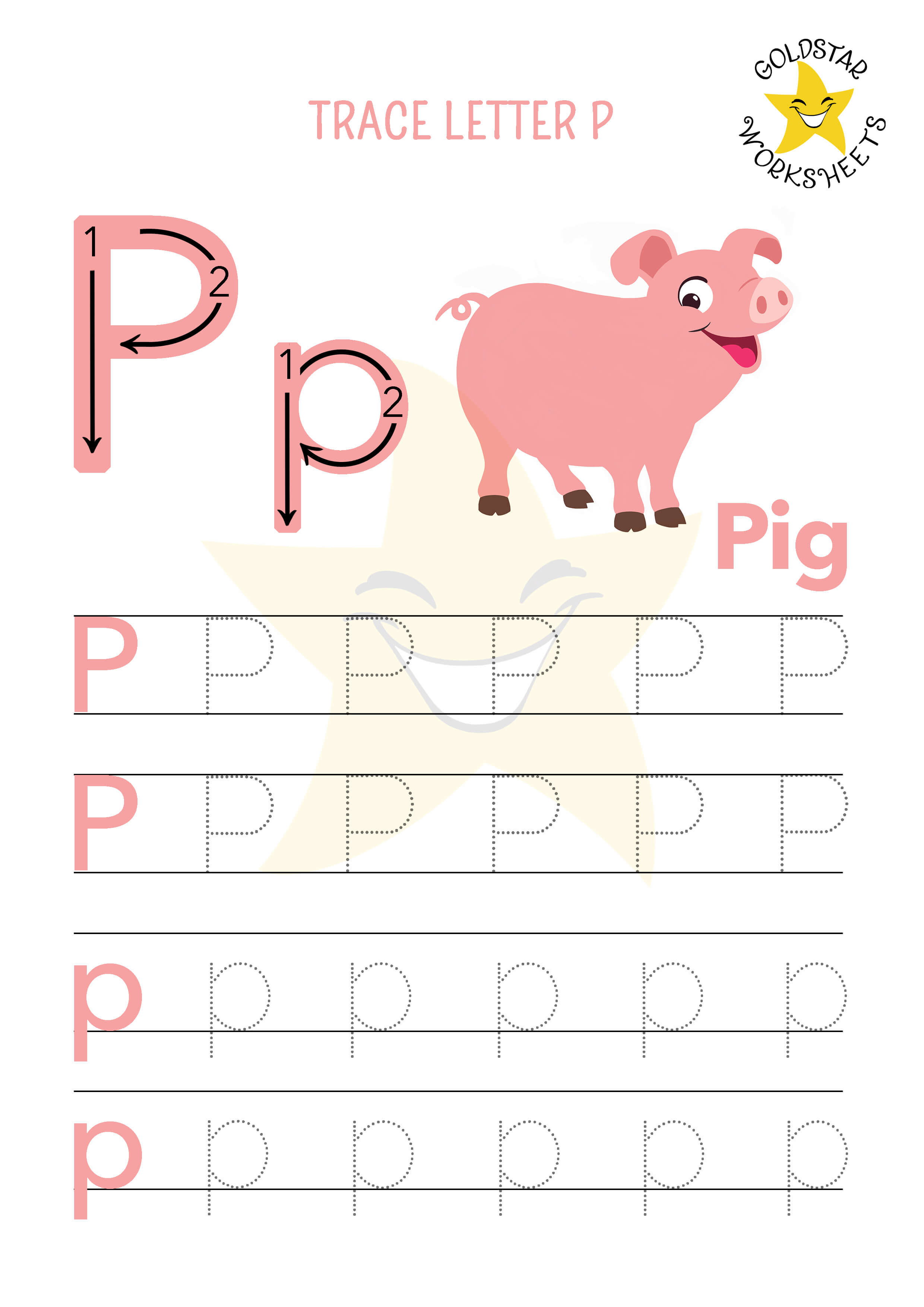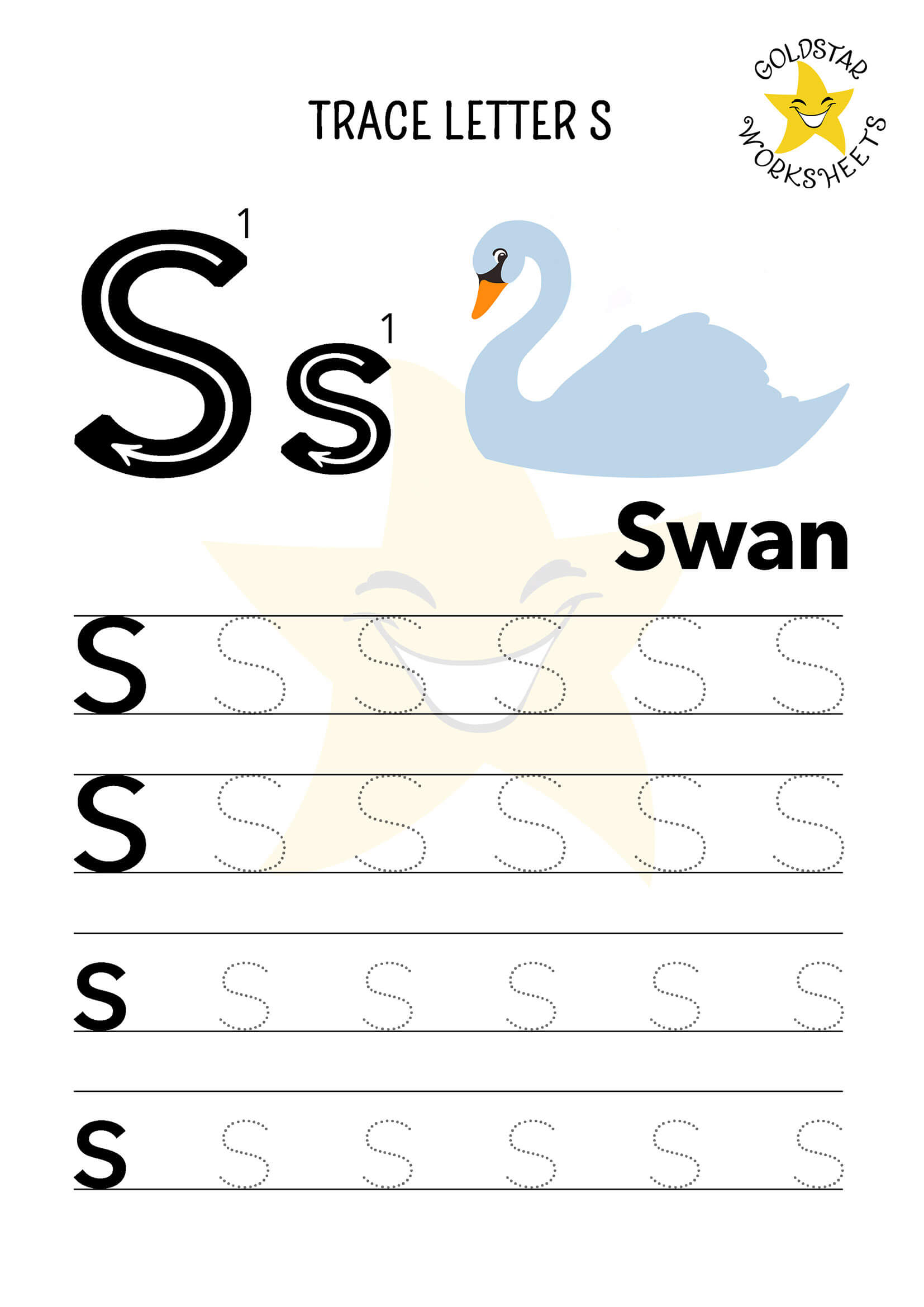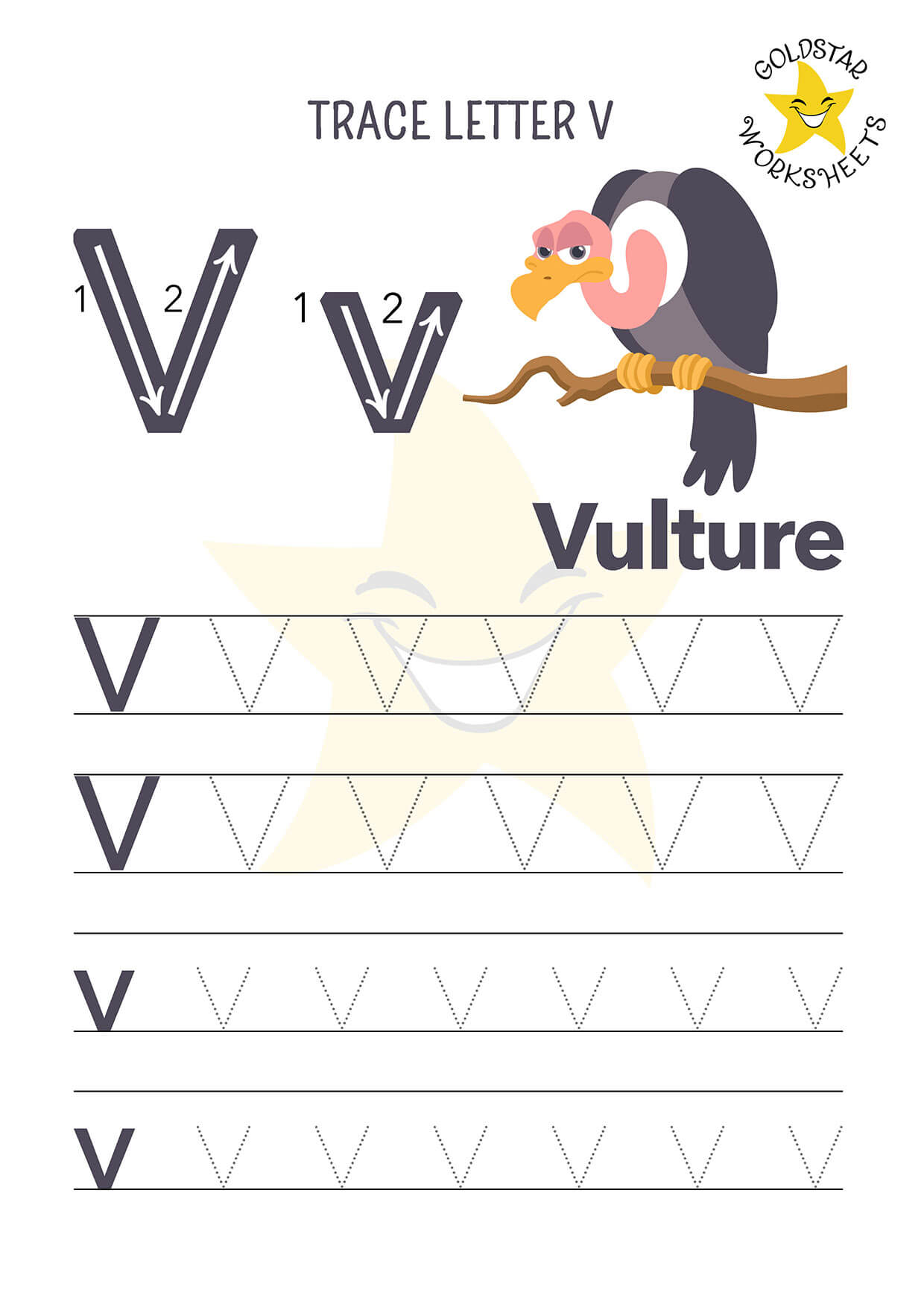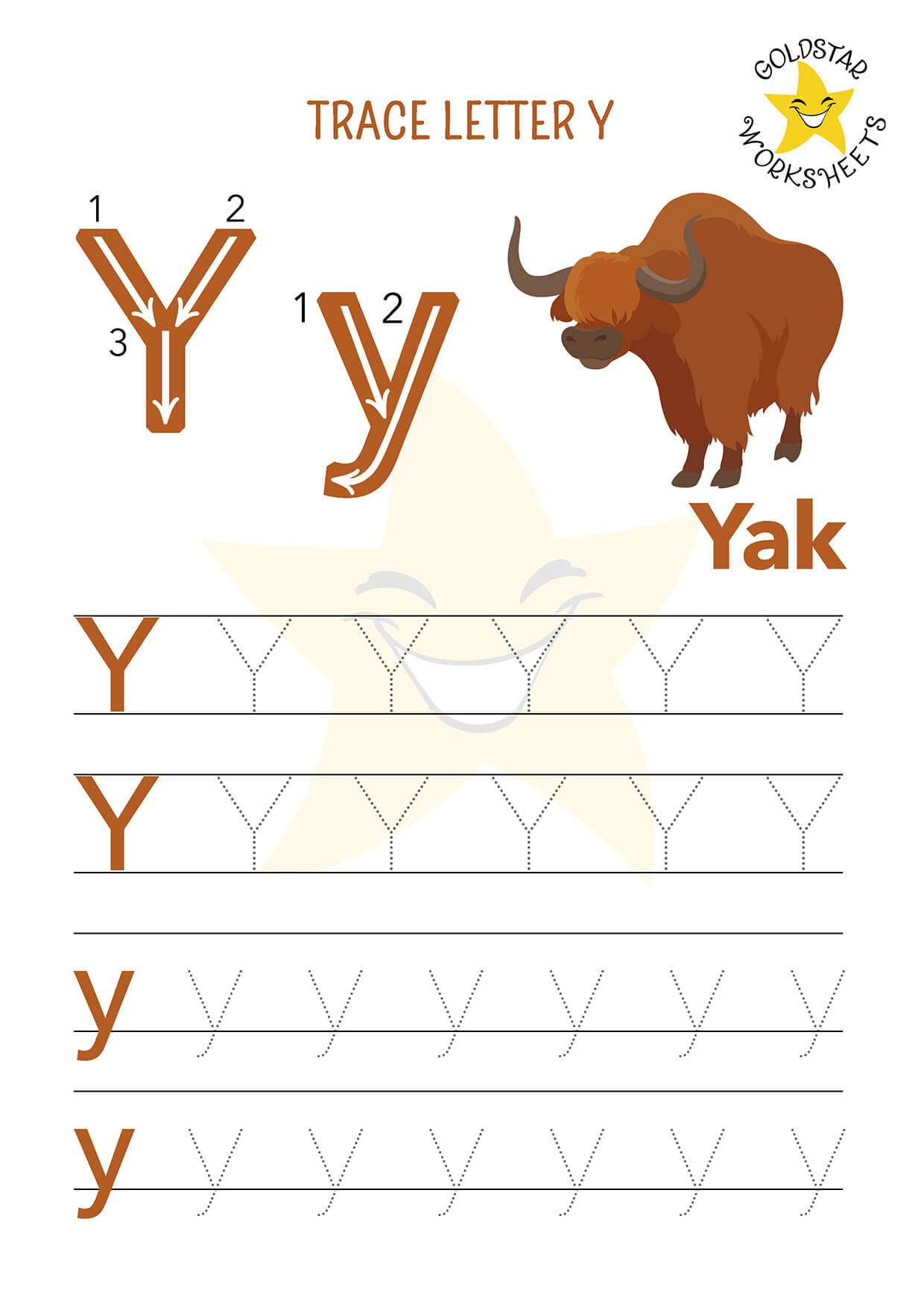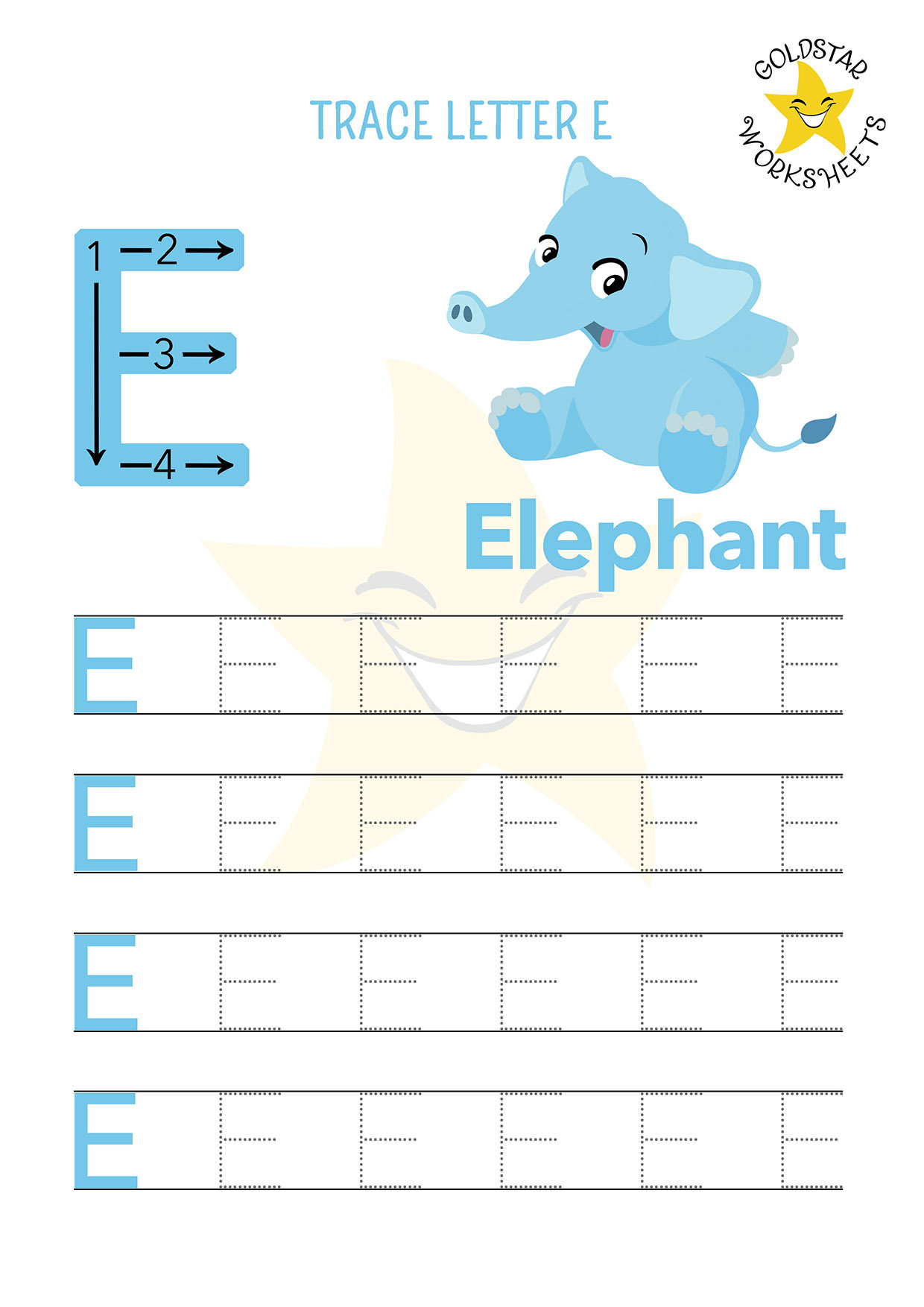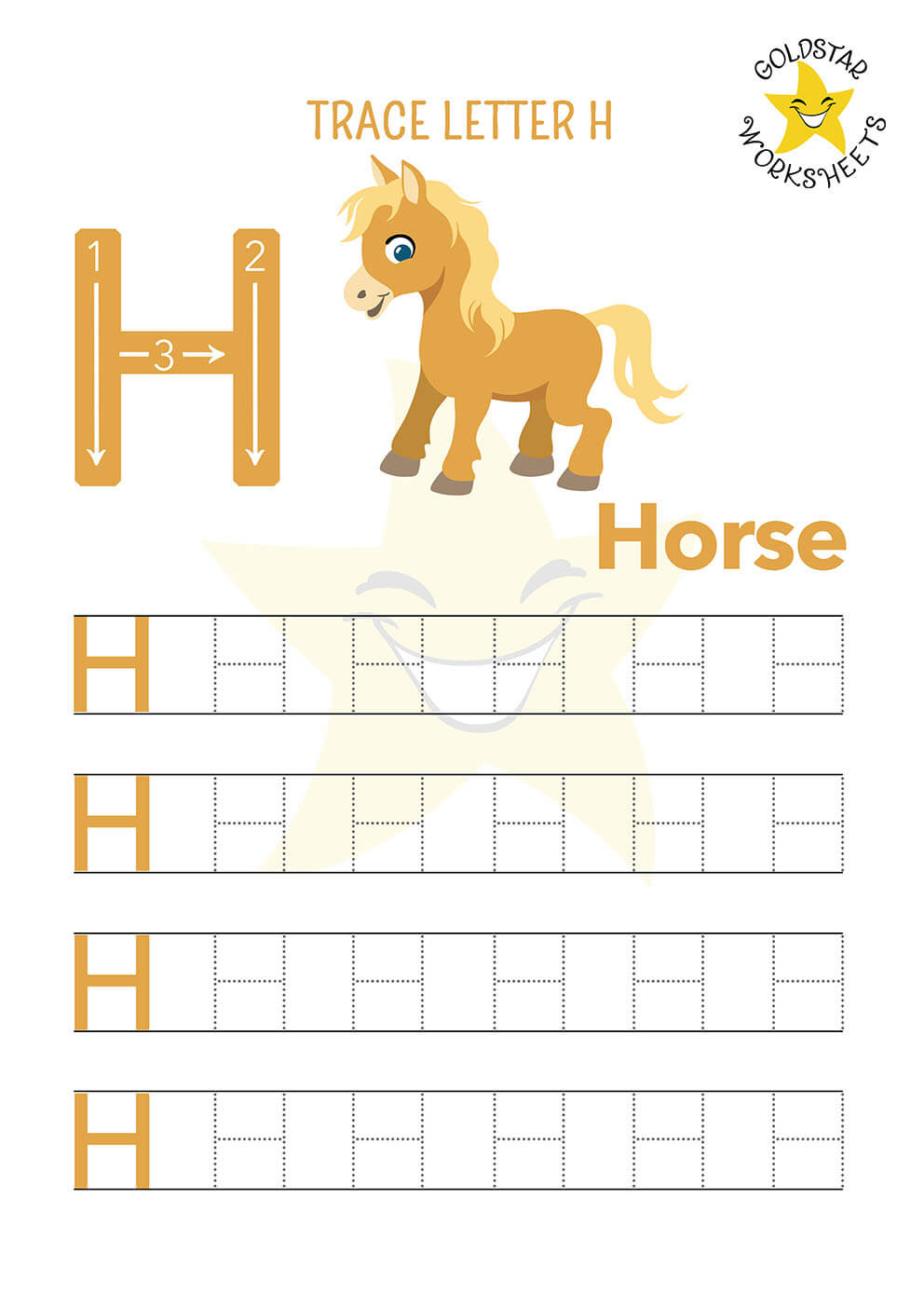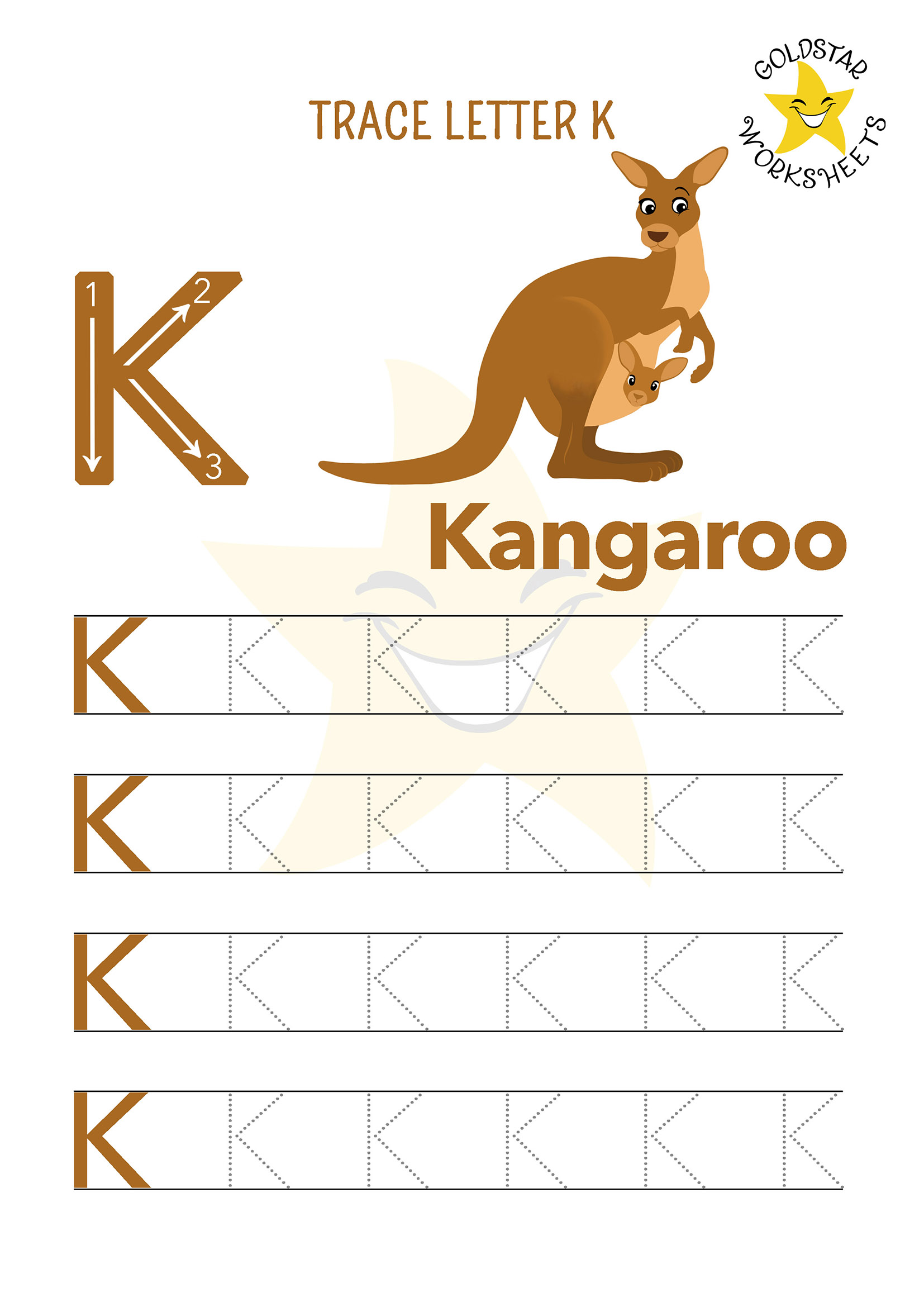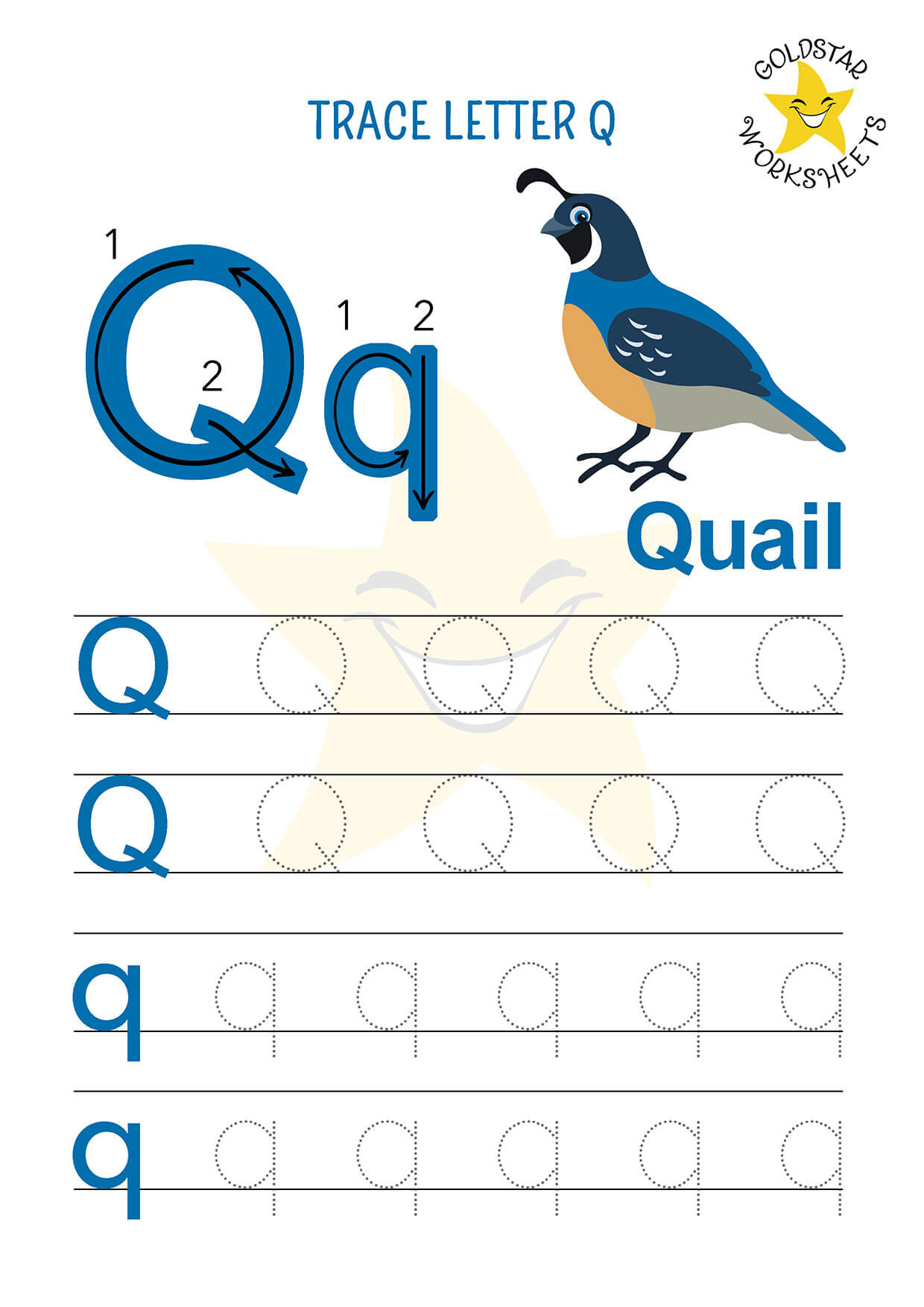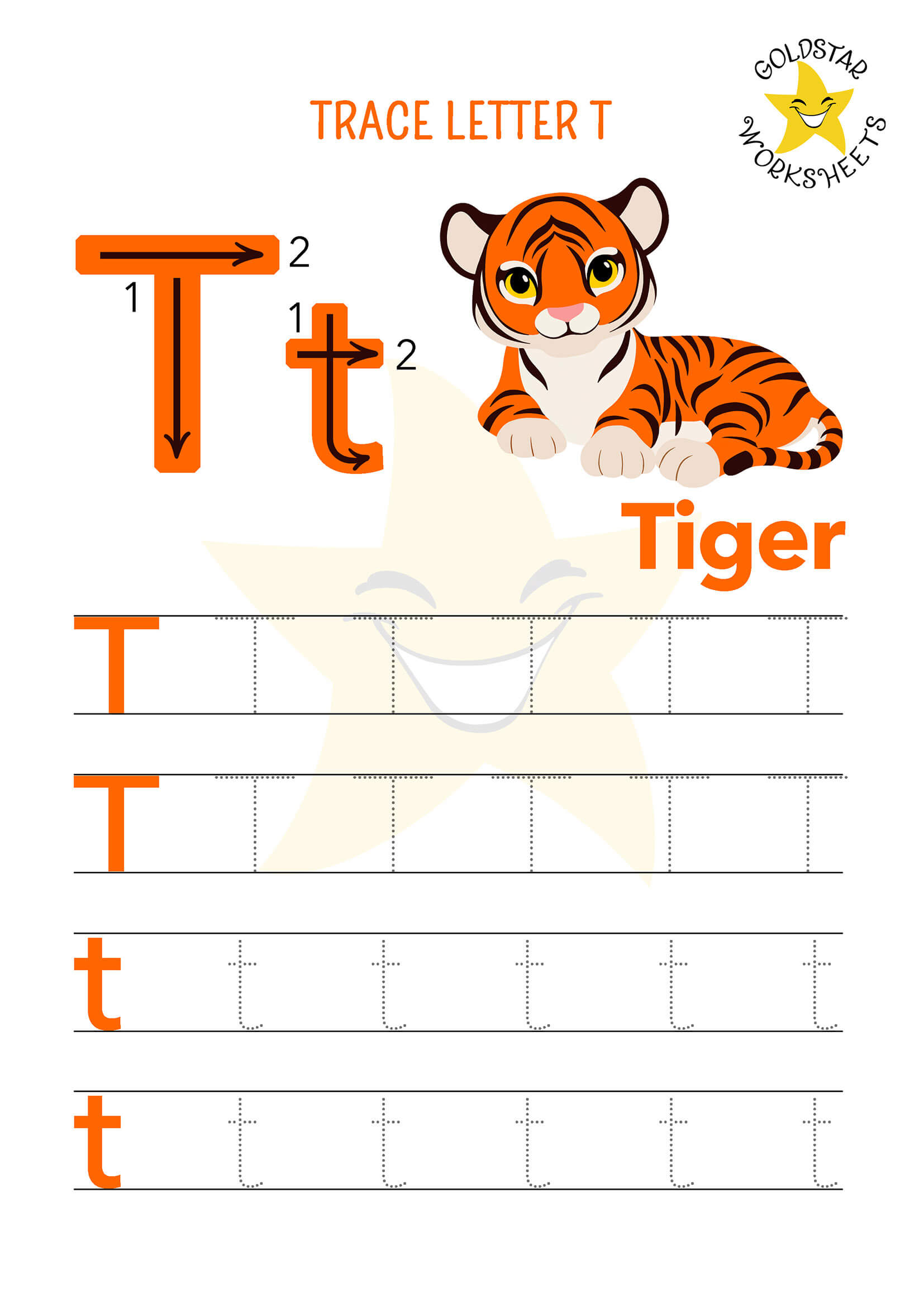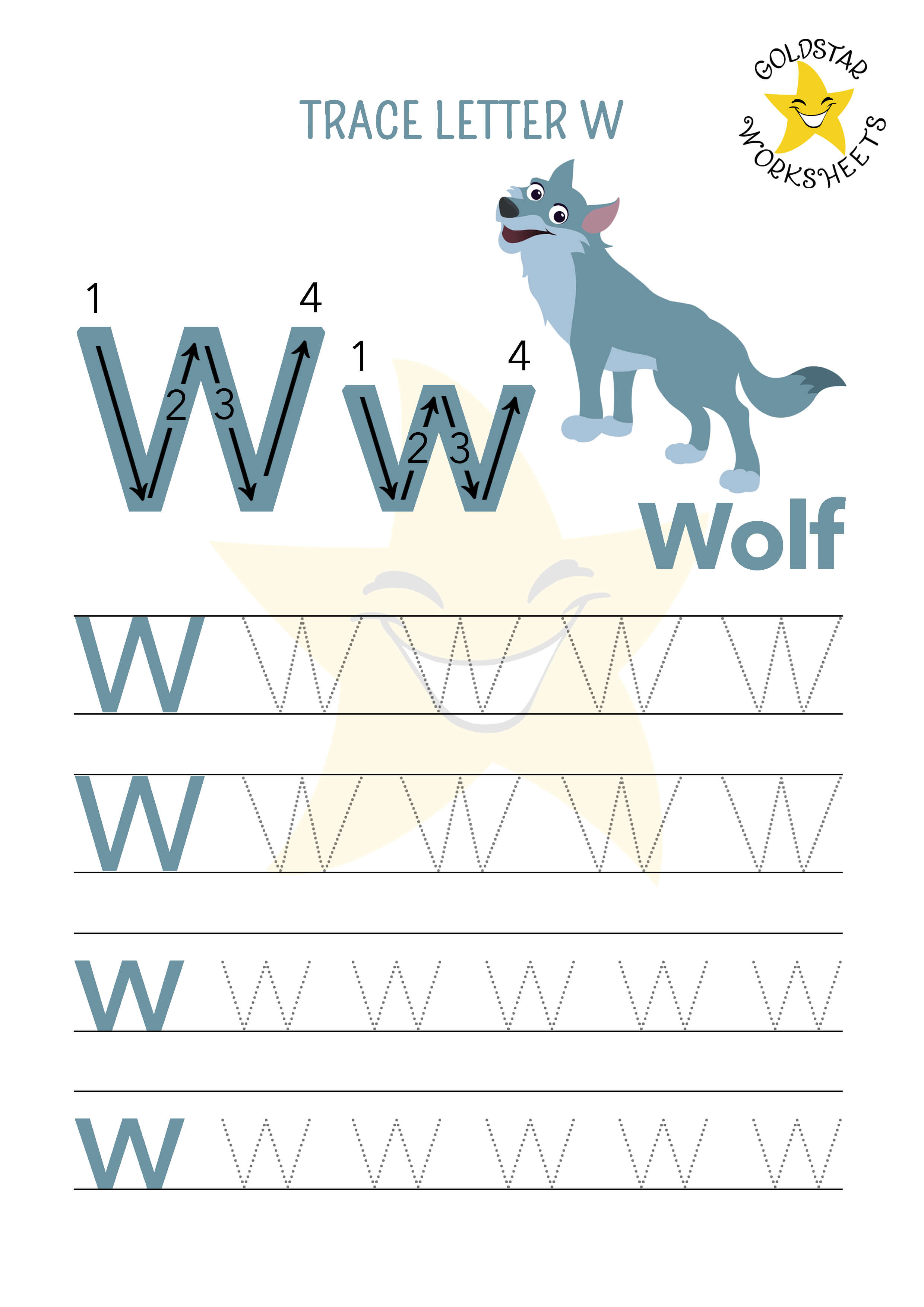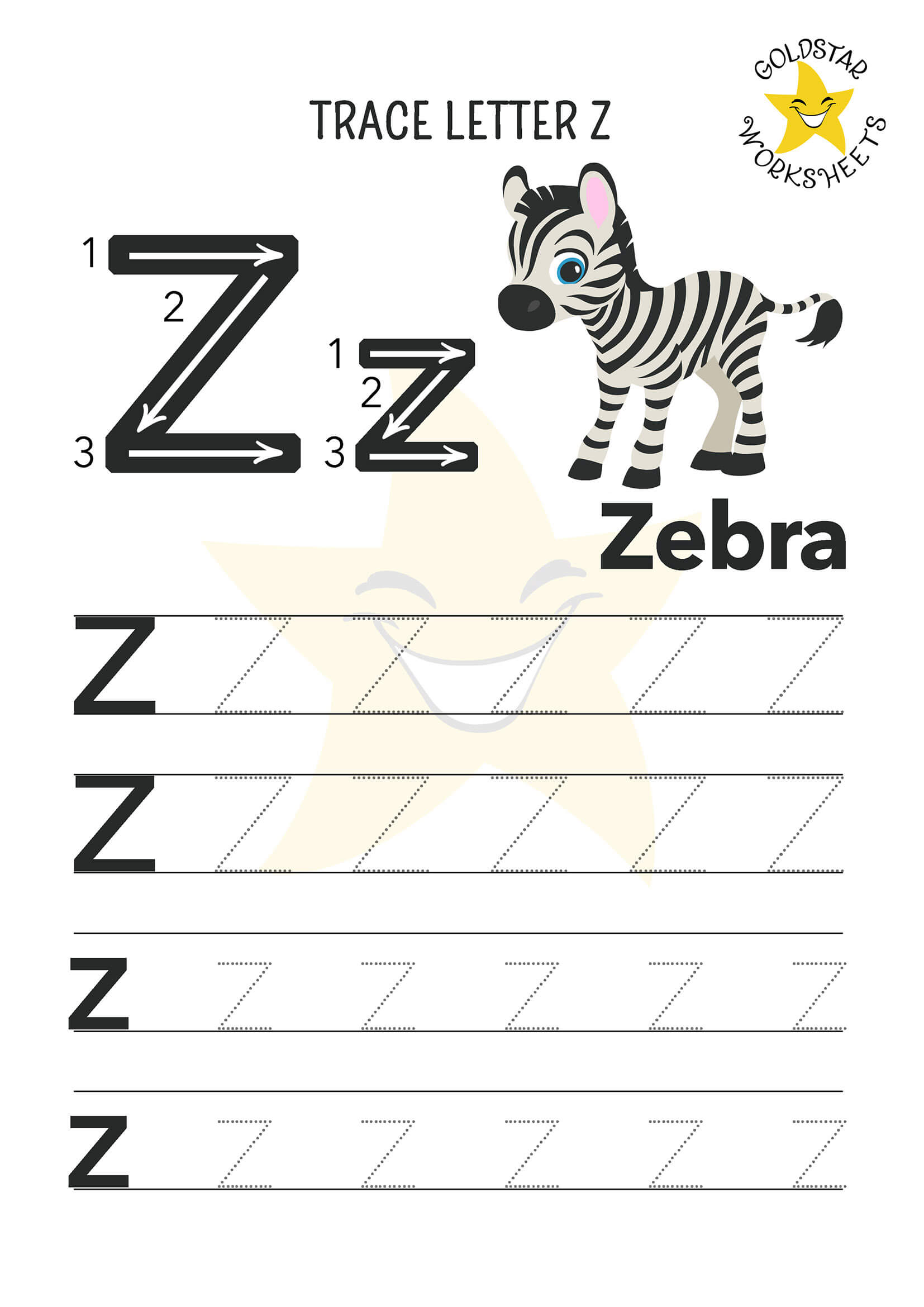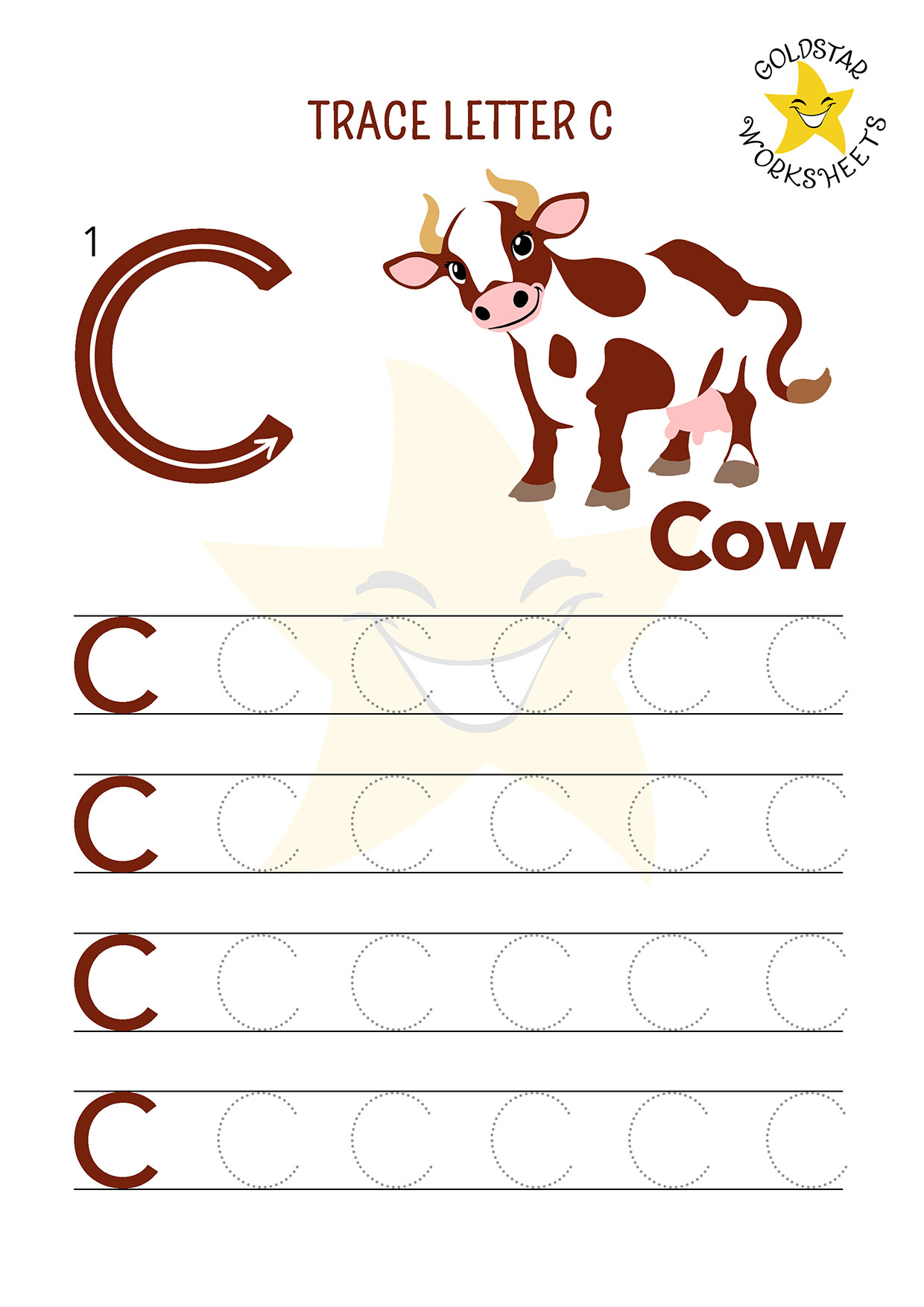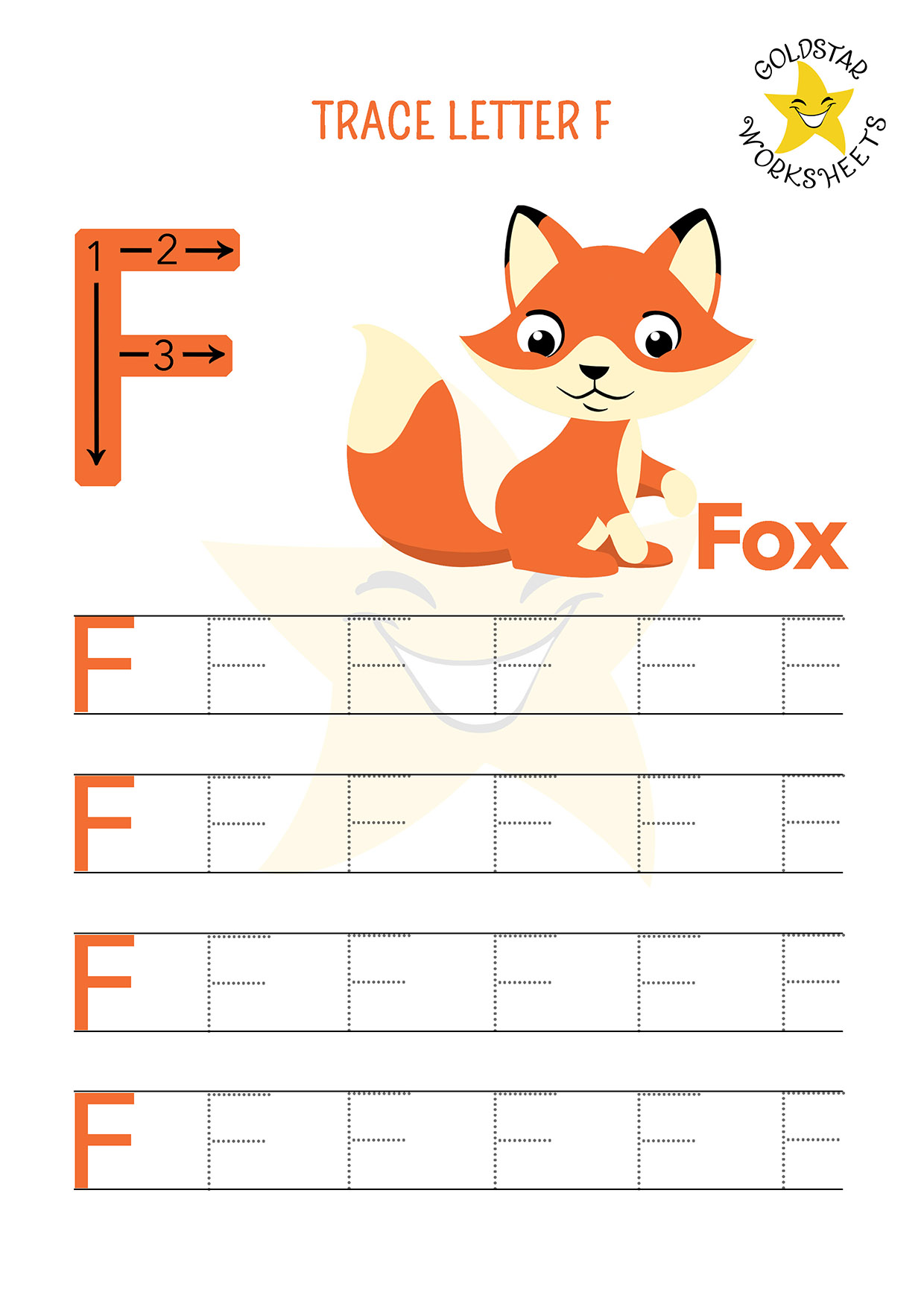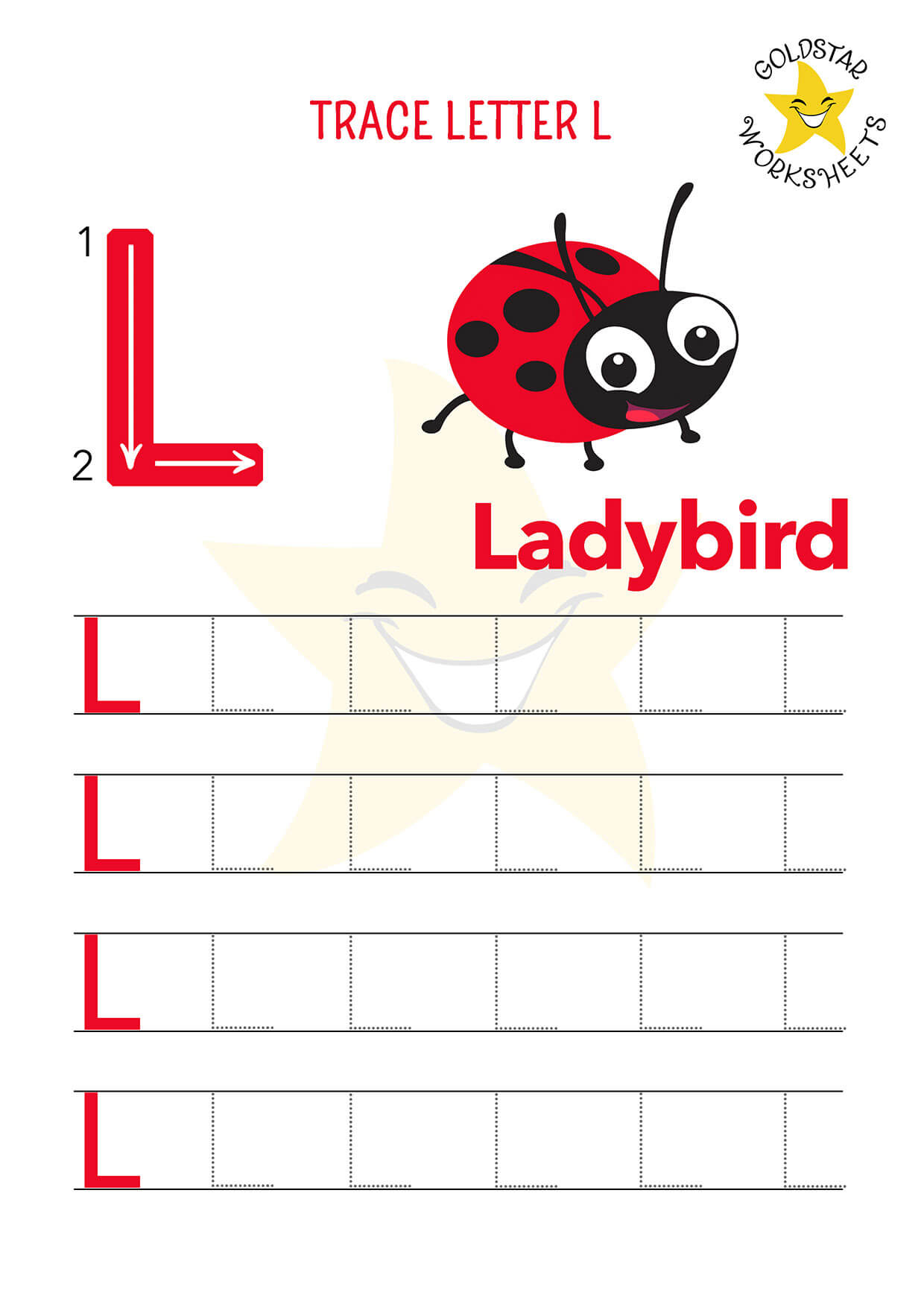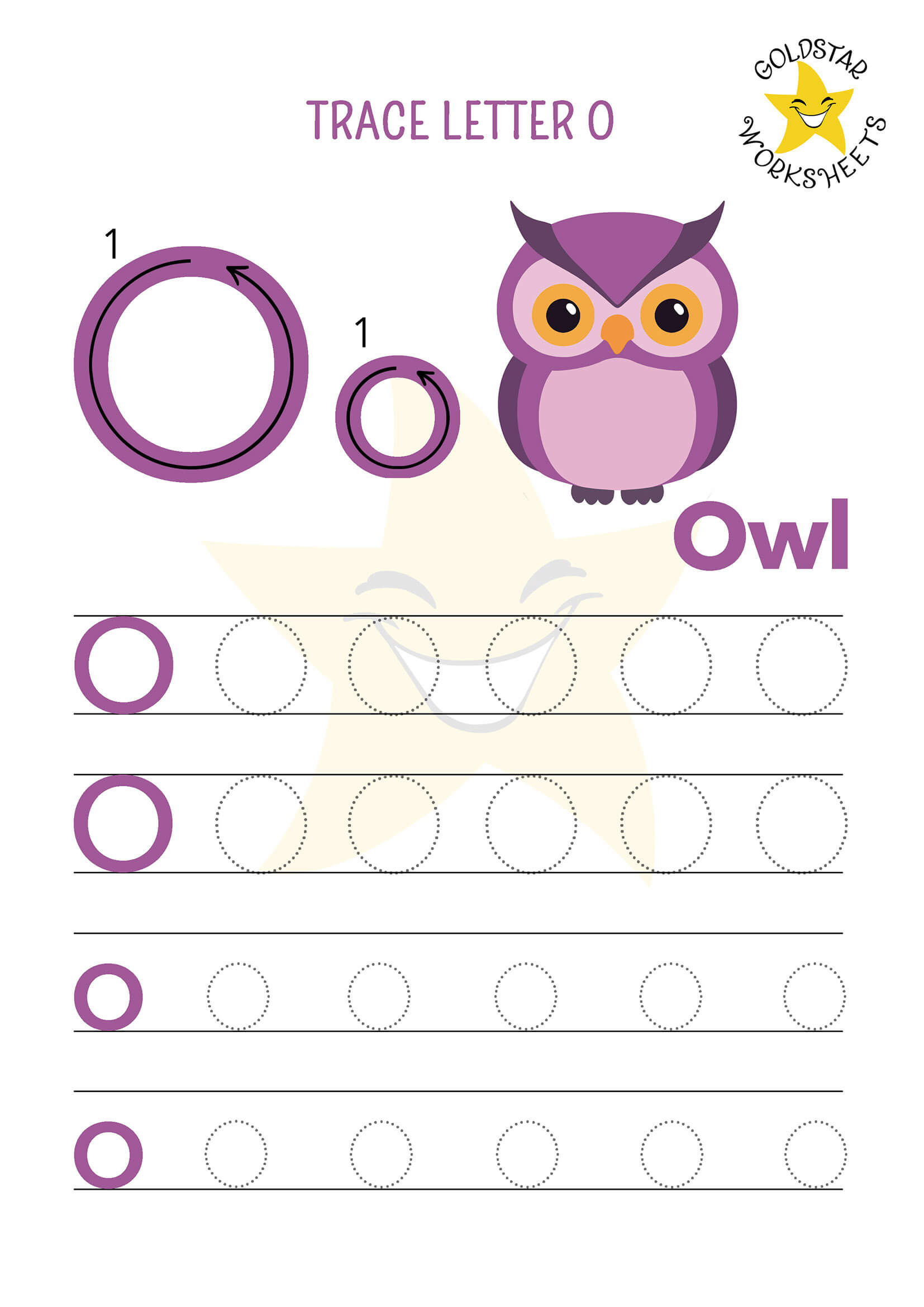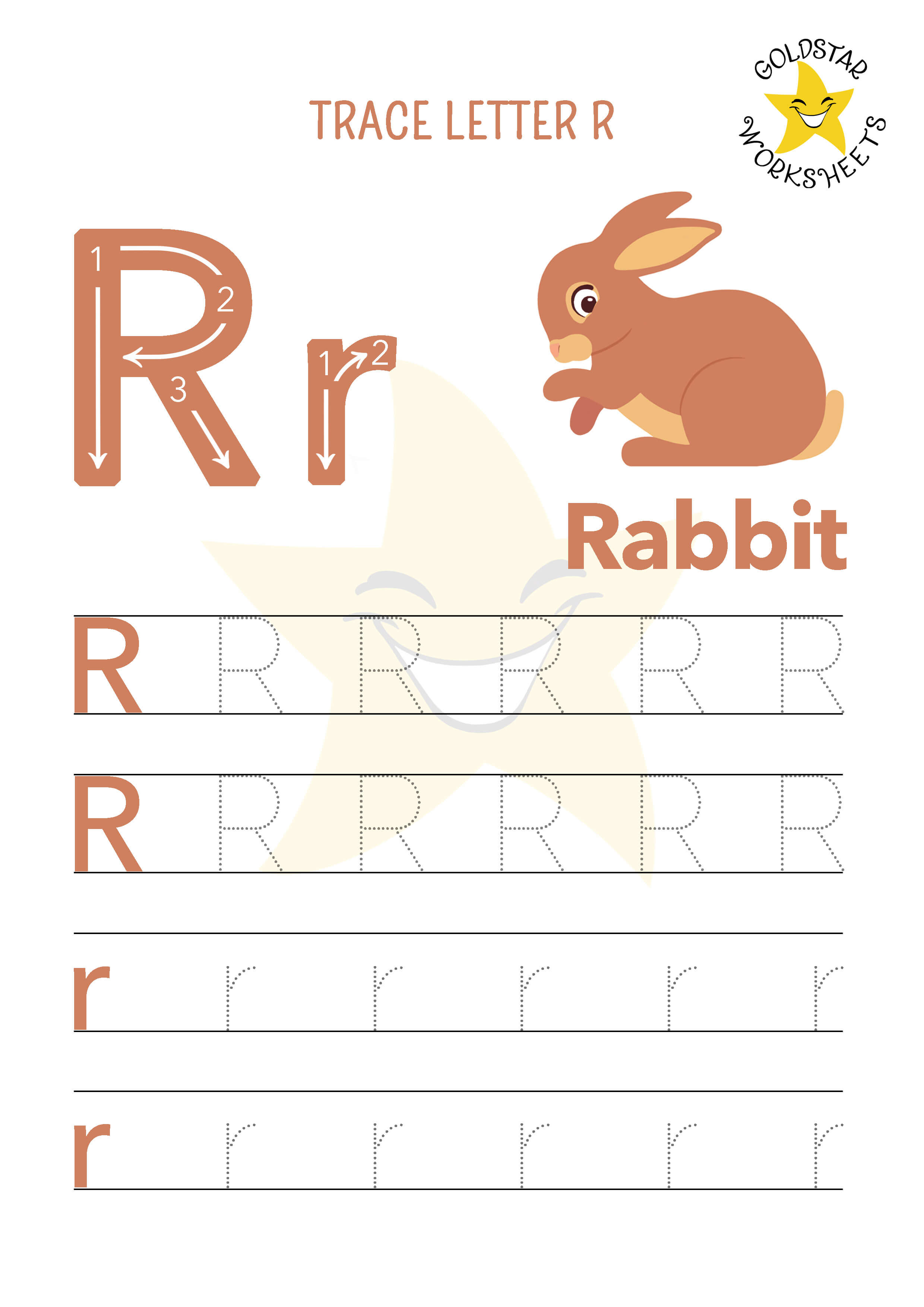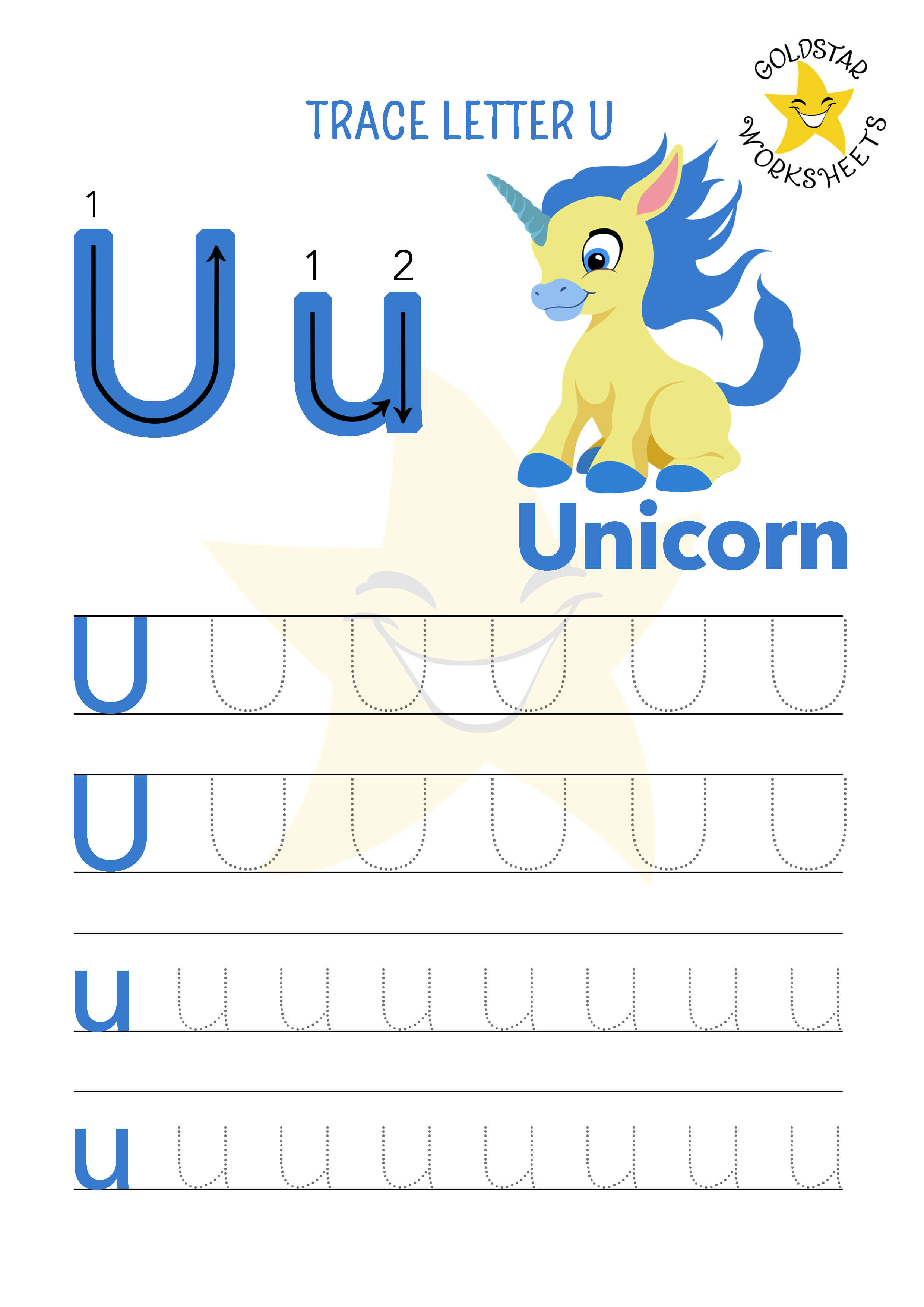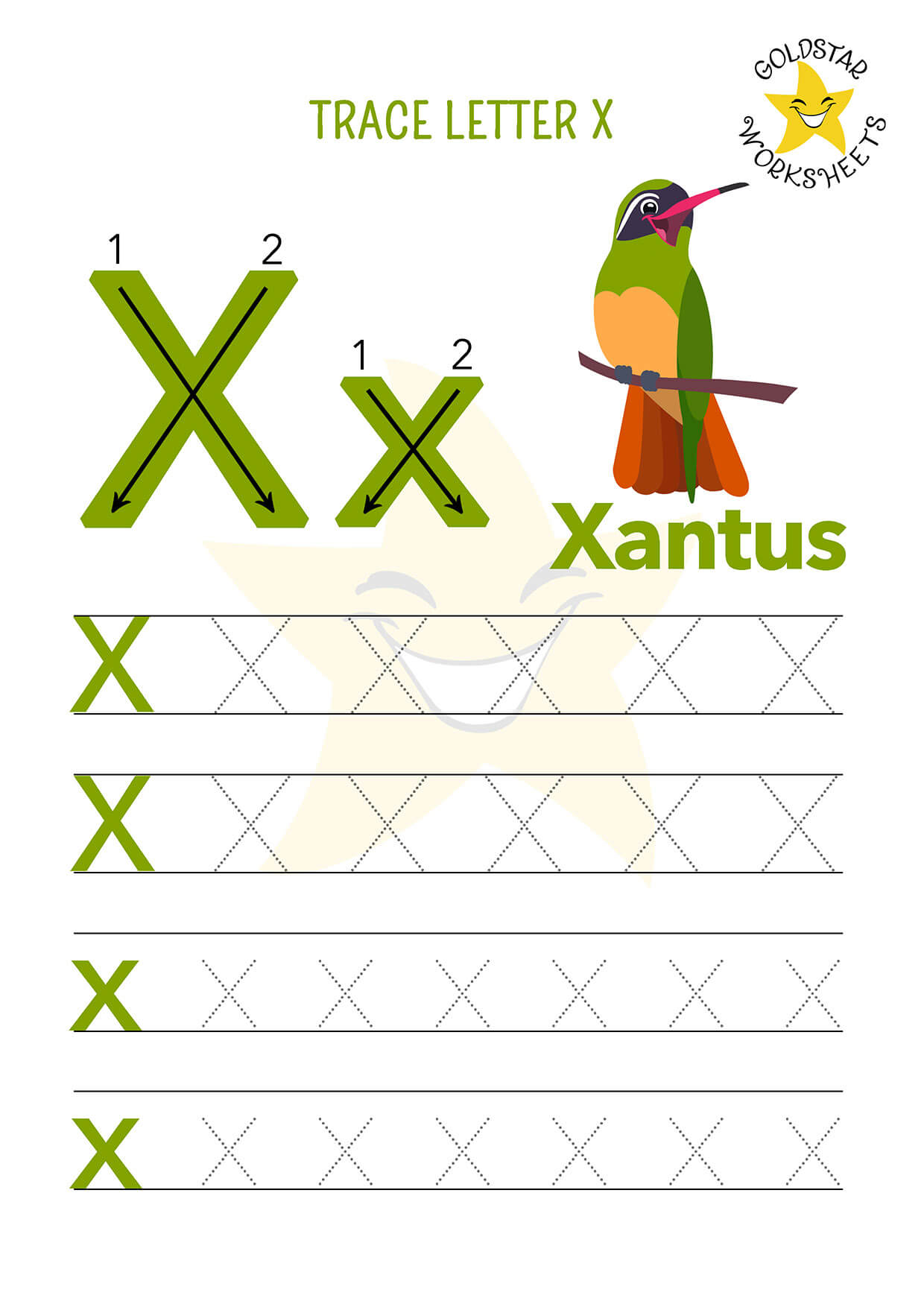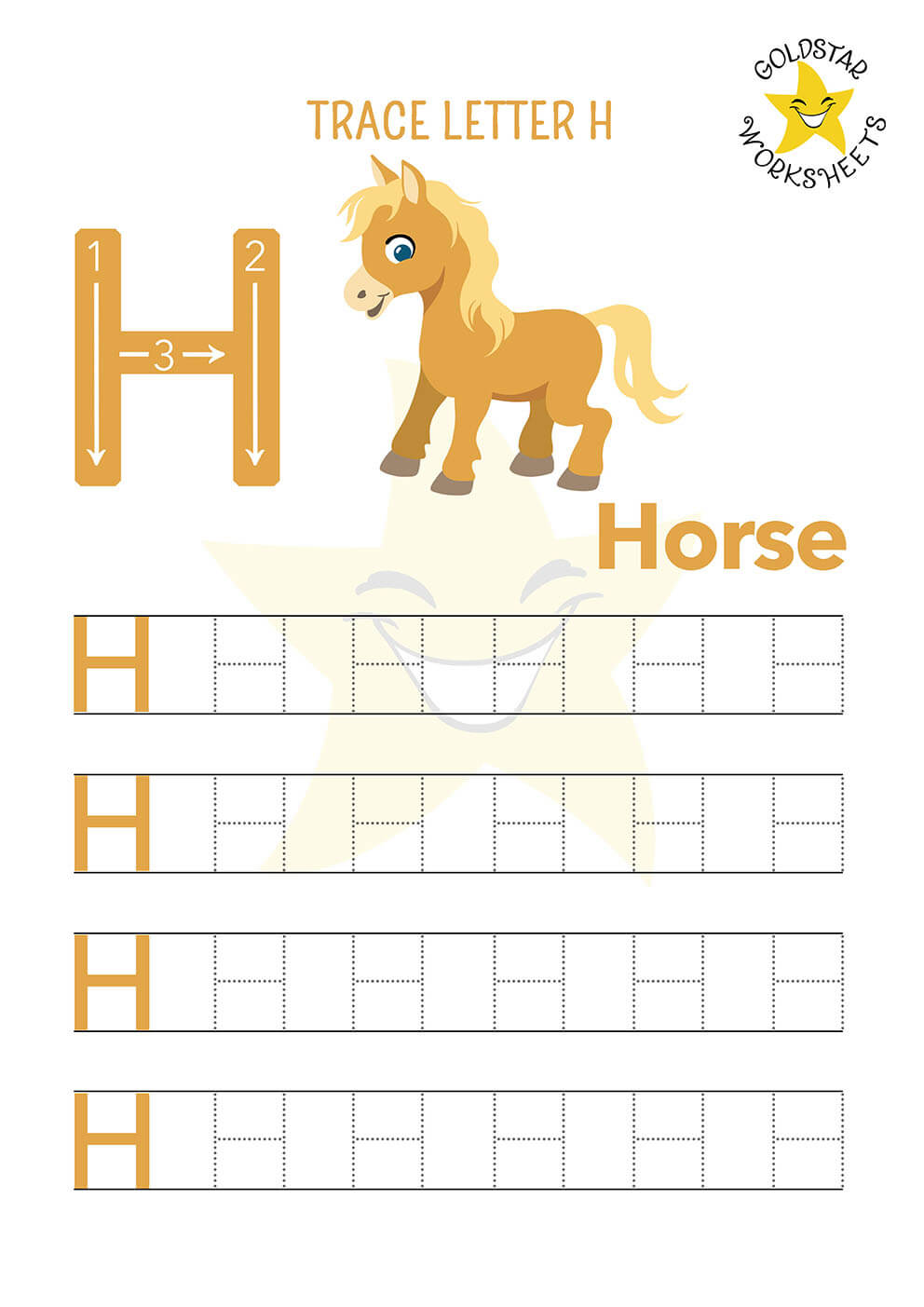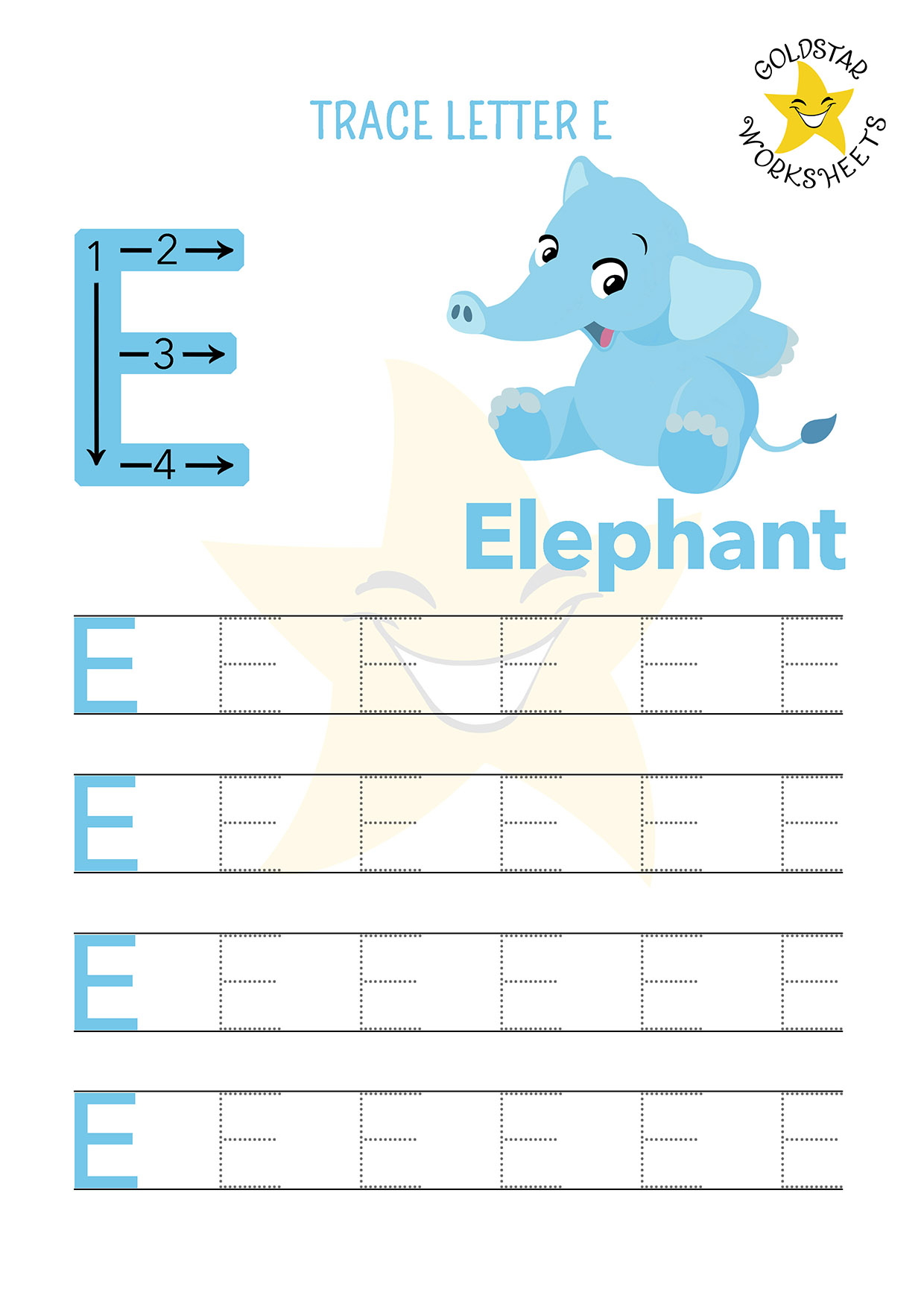- Home
- Alphabet
Free Letter Tracing Worksheets for Kids - Vibrant Fun Designs!
Introduction to learning letters
Learning to write the letters is an important step in a child's development. It sets the foundation for being able to read and write, which are essential for a child's growth, happiness, and success in school and beyond.
Where we come in is injecting some fun into this vital process!
We also understand that it can be difficult for some children to learn to write letters. That's one reason that we provide high quality resources that engages them and makes letter tracing more appealing.
We've seen that with high quality tracing worksheets learning writing can be more manageable and enjoyable. At gold star worksheets, our tracing worksheets are engaging and fun, making the process of learning to write letters a better experience for children.
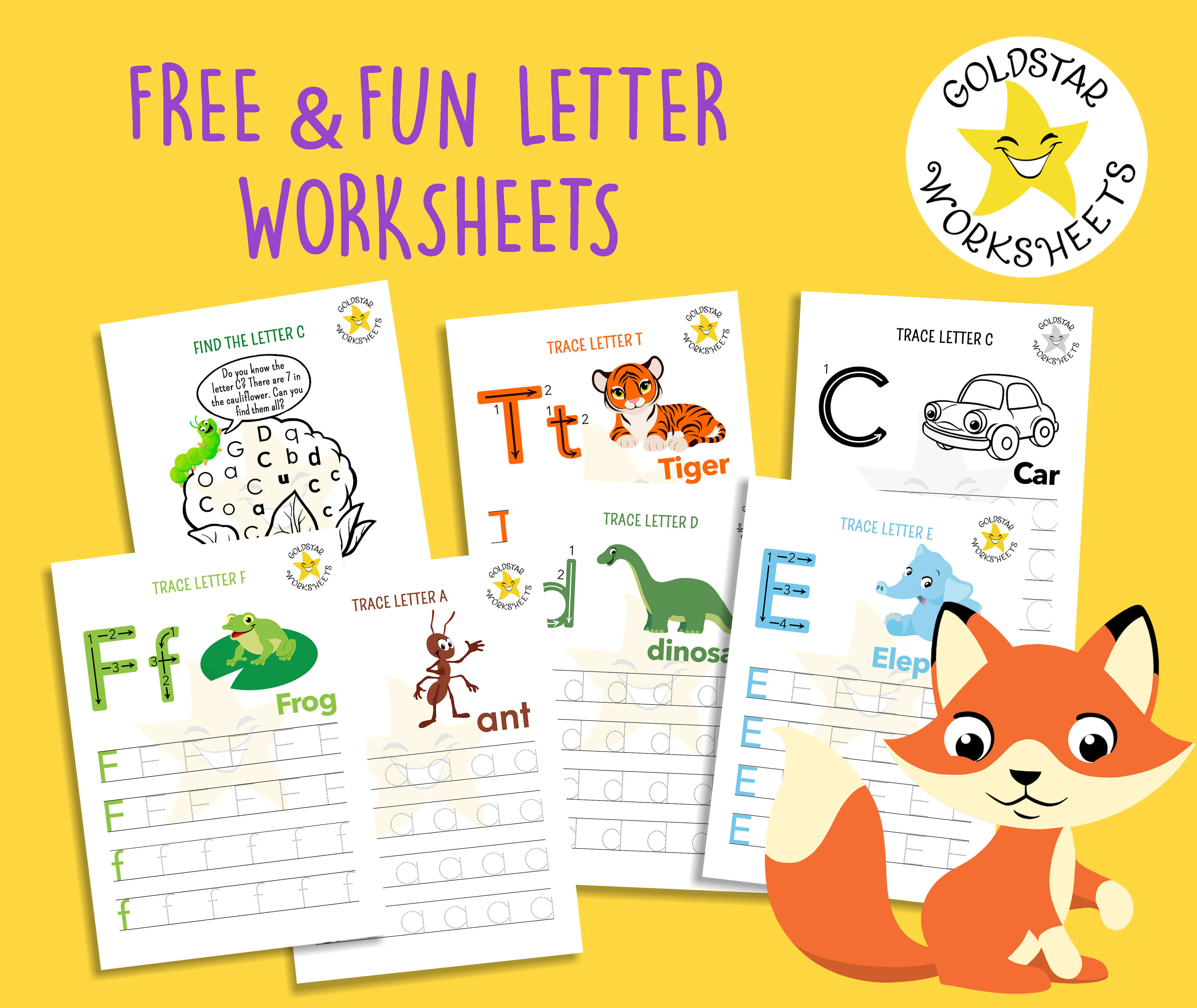
We're excited to share our free letter tracing worksheets for each letter of the alphabet, and explore the many benefits of tracing worksheets. We will also provide tips and techniques for using tracing worksheets in a way that's more supportive and interesting for young children.
Whether you're a parent or teacher, we hope to give you the tools and resources you need to make letter writing a positive and meaningful experience for the children in your life.
All our worksheets are designed by a children's illustrator, and a teacher/psychologist...they're all free because we're committed to closing the equality gap in children's education.
Benefits of using alphabet tracing worksheets
There are several benefits to using letter tracing worksheets for children learning to write letters, some of them include:
- They provide a visual: Tracing worksheets give children a visual of the letters they are learning while attempting to write. This can make it easier for them to grasp and internalise the shape and form of the letters.
- They help with motor skills (movement skills): Tracing the letters on worksheets can help children develop their fine motor skills (small movement skills), which are necessary for writing.
- They provide comfortable practice: Tracing worksheets give children the opportunity to practice writing letters in a do-able way, like having stabilisers on a bike. This can help them to become more confident and proficient in their writing.
- They can provide assessment opportunities: Teachers or parents can use tracing worksheets to assess student progress and identify areas where additional instruction may be needed.
- They are cost-effective: Tracing worksheets are a cost-effective way for parents and teachers to provide extra practice for children learning to write letters.
1. A Visual Aid
One of the wonderful benefits of using letter tracing worksheets is that they provide a visual guide for children as they learn to write letters. These helpful sheets show the little ones the exact shape of the letters and how each letter is formed, making it much easier for them to understand and follow the shape of the letter.
With tracing worksheets, children can see the proper formation of letters and use it as a guide for their own writing. It's like giving them a magic wand that helps them to improve their handwriting and write letters in the correct way.
For example, if a child is learning to write the letter 'A', they can trace the letter on a worksheet, following the dotted lines. This makes it easier for them to see how the letter all comes together with each stroke. This can also help them to internalize the letter's shape, so it preparing them for being able to write it on their own, without tracing, later on.
2. Develop fine motor skills
Using letter tracing worksheets is a fun and interactive way for children to improve their fine motor skills, which are crucial for writing. These worksheets provide a way for children to practice their coordination and control of small muscle movements in their hands and fingers.
As they trace the letters on the worksheets, they are strengthening these muscles, making them more precise and controlled in their movements. This can help them to hold a pencil or pen more securely, making writing a more enjoyable and effortless task.
Additionally, tracing worksheets can also help children improve their hand-eye coordination, which is an essential skill for writing. By tracing the letters on the worksheets, children are developing this skill while also feeling engaged and motivated by the friendly and fun illustrations.
3. Gives children the experience of writing correctly
One of the benefits of using letter tracing worksheets is that they can assist children in developing good handwriting habits. Developed early on, such habits lead to more legible and neat writing, which can make it easier for parents and teachers to read their work, and for children to read their own writing too!
It's like giving children a secret decoder to write the letters correctly, like solving a puzzle. . By tracing the letters on the worksheets, children can practice writing letters accurately, which can give them that little-victory feeling… a sense of accomplishment and help them to form positive habits.
4. Gives assessment opportunities in an enjoyable way
Another benefit of using letter tracing worksheets is they can provide assessment opportunities for teachers and parents. Tracing worksheets can be used to keep an eye on a child's letter writing progress and highlight areas where they may need more support or practice.
For example, a teacher or parent can use tracing worksheets to observe how accurately a child is forming letters, and how well they are following the suggested letter formation guidance, comparing past work and looking for progress. This can provide valuable information on the child's writing development and can be used to plan future instruction and activities.
Additionally, tracing worksheets can also be to assess. Children can be asked to trace letters and complete worksheets without any help, and this can provide insight into a child's level of understanding and ability to write letters independently.
5. Cost-effective
Using letter tracing worksheets can be a cost-effective way for parents and teachers to provide children with the resources they need to learn to write letters. Our letter tracing worksheets are available for free and can be easily printed at home or accessed digitally. This makes them a convenient and budget-friendly option for parents and teachers who may have limited resources.
Furthermore, letter tracing worksheets can be used over and over again, allowing children to practice and improve their writing skills without the need to constantly purchase new materials. This can save parents and teachers money in the long run, as they don't have to buy new workbooks or materials every time a child needs extra practice.
How to use Tracing Worksheets effectively
- Start with letters that are easier to do developmentally by beginning by introducing the tracing worksheets that focus on the most basic shapes such as straight vertical and horizontal lines. This will help children to develop their fine motor skills and get them used to holding a pen or pencil more easily and quicker.
- Gradually increase difficulty level: As children become more comfortable with tracing basic shapes, gradually increase the difficulty of the worksheets by introducing more complex letters and words.
- Use a variety of materials: Tracing worksheets can be done with a variety of materials, such as pencils, markers, or even paint. Mixing it up and letting the child choose their favourite will make it more fun and interesting.
- Positive reinforcement: Encourage children by praising their efforts and highlighting their progress. Show them how far they have come and how well they are doing.
- Make it fun: Incorporate fun activities into the tracing routine such as playing tracing games, tracing on different surfaces, or tracing with different tools, like using a big brush to trace letters on the carpet.
1. Starting with tracing letters that are easier to do
Occupation therapists suggest that, as much as possible, to start with letters that have more straight lines and horizontal lines, then introducing ones that have more curved, then finally diagonal lines. This is because the majority of children first learn to draw a straight line, then later on a diagonal line.
Tracing in this way can help children to gain confidence in their ability to trace and write sooner. They can see that they are able to successfully follow the lines and create the shapes on the worksheet, which can boost their self-esteem and make them eager to continue to learn more.
It's important to note that, when starting with tracing, it's best to use simple and clear worksheets and avoid overloading children with too much information at once. We keep it simple and fun utilising a good amount of white space and making the letters to trace large enough for beginners.
2. Gradually increase the LETTER TRACING difficulty level
When you start with developmentally easier lines and gradually increase the difficulty as the child becomes more comfortable and confident, you can create an upward spiral of learning and growth.
Gradually increasing the difficulty is an important aspect of using tracing worksheets.
By starting with simple letters and gradually increasing the difficulty, children can build on their skills and progress at a pace that is comfortable for them.
This gradual progression helps children to feel successful and motivated to continue learning, rather than feeling overwhelmed or frustrated by not being able to do it. Also, it's important to note that some children may need more time than others to progress through the worksheets, so it's important to be patient and flexible.
It's also a good idea to give children time to practice each shape or letter before moving on to the next one. Let them enjoy that savour that success for a little while before moving on. This will help to build their confidence which is so precious in the learning journey.
3. TRACING WITH a variety of materials
Using a variety of materials when tracing letters and shapes can be a great way to keep children engaged and motivated. It can also help them, as mentioned before, to develop their fine motor skills... but also their creativity.
Some materials that can be used include:
- Pencils: These are traditional materials and are great for basic tracing. For total beginners to tracing, a pencil is generally considered the best writing tool to start with. Pencils are easy to hold, they have a good grip and are easy to control, making them ideal for children who are still getting to grips with holding a writing tool. They also come in different sizes, so you can choose the one that fits your child's hand size. Pencils are also erasable which means that children can make mistakes and correct them easily, this can help to build confidence and reduce frustration.
- Another great option for newbies is to use a pen with washable ink. This will allow children to practice without the fear of making mistakes and staining their worksheets. If they make a mistake, the ink can be easily removed by wiping it with a damp cloth or washing it off with water. The ink used in washable pens is not permanent, so the marks will disappear after a certain time. This may limit their use in certain situations or for certain projects, but it makes them perfect for tracing or practicing writing.
- Markers and crayons: These materials can be used to trace on thicker papers or cardstocks. They are also great for introducing children to different colors.
- Finger paint: If you don’t mind a bit of potential mess and extra prep, finger painting can be a fun and exciting way for children to trace letters. It's a fun and interactive way for children to explore color and texture while learning to write. Children use their fingers to mix, spread and apply the paint.
Using a variety of materials can help to keep children interested, and also provide them with a sense of creativity and experimentation. It's important to keep in mind that when using different materials, children may need to adapt their tracing technique, or adjust to different textures and weights. It's also helpful to explain and demonstrate to children the different ways of using the materials and the different results they can expect.
It's important to keep in mind that every child is different, and some may prefer a different writing tool. It's always good to offer a variety of options and let the child choose which one they feel more comfortable with.
Ultimately, the best writing tool for tracing is the one that the child feels comfortable holding and using, as it will encourage them to practice and improve their writing skills.
4. Praising their TRACING efforts and highlighting their progress
Providing positive reinforcement can play an important role when using tracing worksheets with children. It’s is a way of encouraging and rewarding attitudes, actions, and progress, which can help to motivate children to continue working and improve their skills.
When using tracing worksheets with children, it's important to provide them with positive feedback and encouragement for their efforts. This can be done by praising their effort, their patience, their technique, their spirit in the face of difficulty. It can also be about showing them their progress, and giving them rewards for their achievements. All of this will help to boost their confidence and make them feel good about themselves.
A reward can be something as simple as a sticker or a small treat, or even a special activity they enjoy. The reward should be something that the child values and is motivated by, as it will help to keep them engaged and excited about learning.
It's important to remember that every child is different, and what works as a positive reinforcement for one child may not work for another. It's always good to get to know each child and understand what they enjoy and what motivates them. As this no doubt changes many times as well. This way, you can create a positive and fun learning environment that will help them to improve and enjoy challenge and growth.
5. Making TRACING WORKSHEETS fun
Making tracing worksheets fun is an important when using them with children. One way to make tracing worksheets fun is by incorporating games and activities into the learning process.
For example, you can create a tracing scavenger hunt, where children try to find the worksheet (hidden in various places) that match the letters on their special list… when they find them all they get a prize. Or, you can make a tracing bingo game, where children have to trace certain letters to complete a bingo card.
You can also make tracing worksheets fun by incorporating music or songs into the learning process. Children can trace letters to the beat of a song or while singing along. Or how about dancing? They can try to do dance moves that look like the letter.
When it comes to fun, it’s also important to remember to make sure that the worksheets are age-appropriate and challenging, but not so hard that it becomes frustrating for the child. When scientists analysed situations when joy occurred, they found safety and familiarity were typically present. (Fredrickson, 2011).
Finally, it's important to make sure the child is comfortable and in a happy environment. A child who is relaxed and happy is more likely to enjoy the activity.
Making tracing worksheets fun is all about finding creative ways to engage children and make learning an enjoyable experience. By incorporating games, different materials and tools, music, and age-appropriate challenges, you can help children to have fun while learning to trace the alphabet.
A suggested order to teach writing letters

As you can see, the Occupational therapists at the OT toolbox suggest a specific teaching in sets. They recommend starting with writing capital letters and then moving on to writing lower case letters. They argue that handwriting is a very specific type of development. By understanding how the skill of writing happens, they're able to offer great insights and a specific ideal order.
Uppercase letters have less chances for letter reversal, which is common with b, d, g, and q. They also has only two starting points to learn, whereas there are a whopping 7 starting points in lower case letters!
Children tend to first become able to draw straight and horizontal lines, then comes curved lines, and finally diagonal lines. So they start with straight lines only, then straight plus curved, then curved only, then adding the diagonals.
They factor this in to their order to make the challenging task of learning to write easier and smoother. It gives your little one's more small victories early on, allowing confidence to grow more quickly. Kids can build off what they've become good at already. If you want a more detailed explanation about this letter formation order it's a really interesting read.
Good Practice for Handwriting
The national handwriting association created this useful poster with lots of checks and success factors to guide your learning journey with your kids.
How about letting them decide what to focus on first? Ask them which one they'd like to explore?
If for example, pressure is interesting to them, you could demonstrate light, heavy, and medium pressure. You can ask them helpful questions to raise awareness, like, how does your pressure feel?
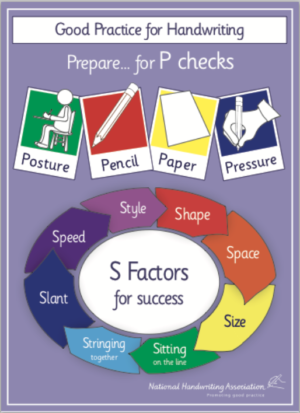
Letter Tracing Worksheets Summary
In conclusion, letter tracing worksheets are an effective and cost-efficient way to help children learn how to write letters of the alphabet. By using tracing worksheets, parents and teachers are providing children with a resource that makes learning to write easier.
Tracing worksheets help children to develop their fine motor skills, improve their hand-eye coordination, and increase their confidence in their writing abilities. Additionally, tracing worksheets can be used in a variety of ways, such as in traditional exercises, scavenger hunts, and using a variety of materials.
So, if you're a parent or teacher looking for a fun and effective way to teach children how to write, our free letter tracing worksheets are definitely worth considering. And don't forget, by clicking on the image of the letter you want to practice above you’ll go through to a page with many free resources available to help you get started. Happy learning!
- Home
- Alphabet
Paper Saving Tip
How about laminating these worksheets so you can use them again and again? Simply use a dry-erase marker and wipe off after use with a wet cloth. Great for the classroom, home-schooling, or for lots of practice at home.
We appreciate that schools around the world all work in different ways, at different paces, and do things in different orders. We acknowledge that many different ways of learning can work well, different approaches being more suitable in different cultures and contexts. We believe that sooner is not better than later, and faster is not better than slower. We wish to support everyone in the way they work so if you work differently and we can help, please do get in touch.
